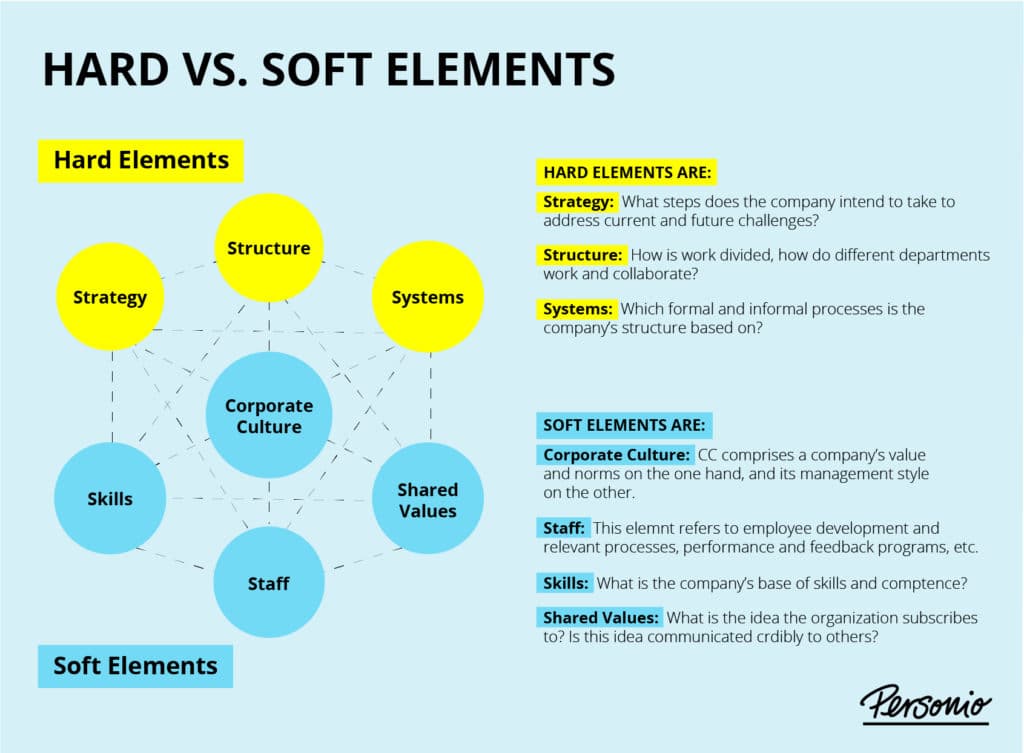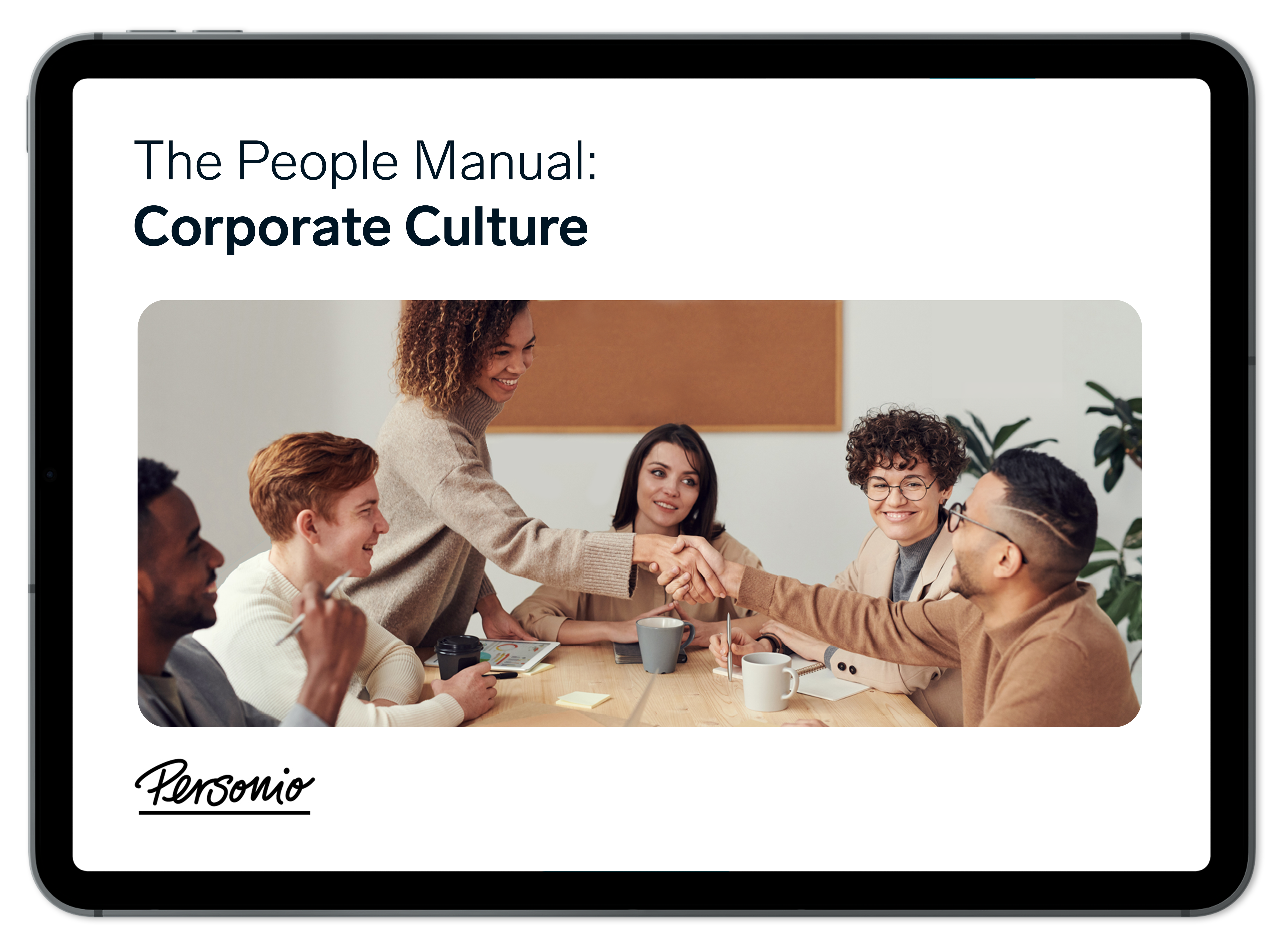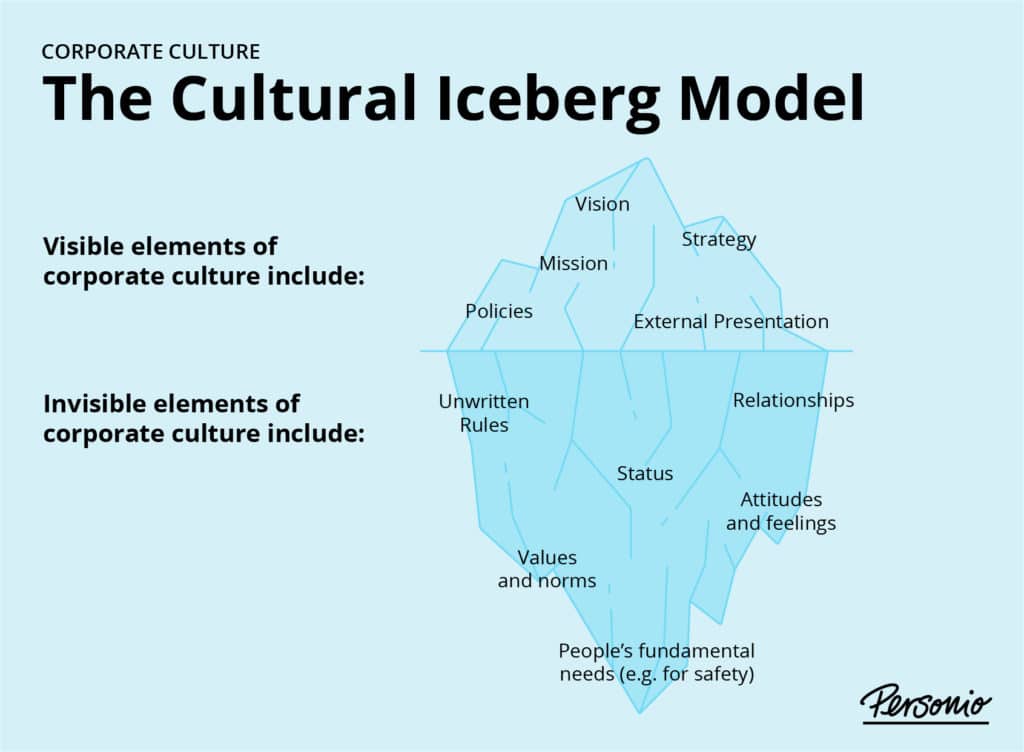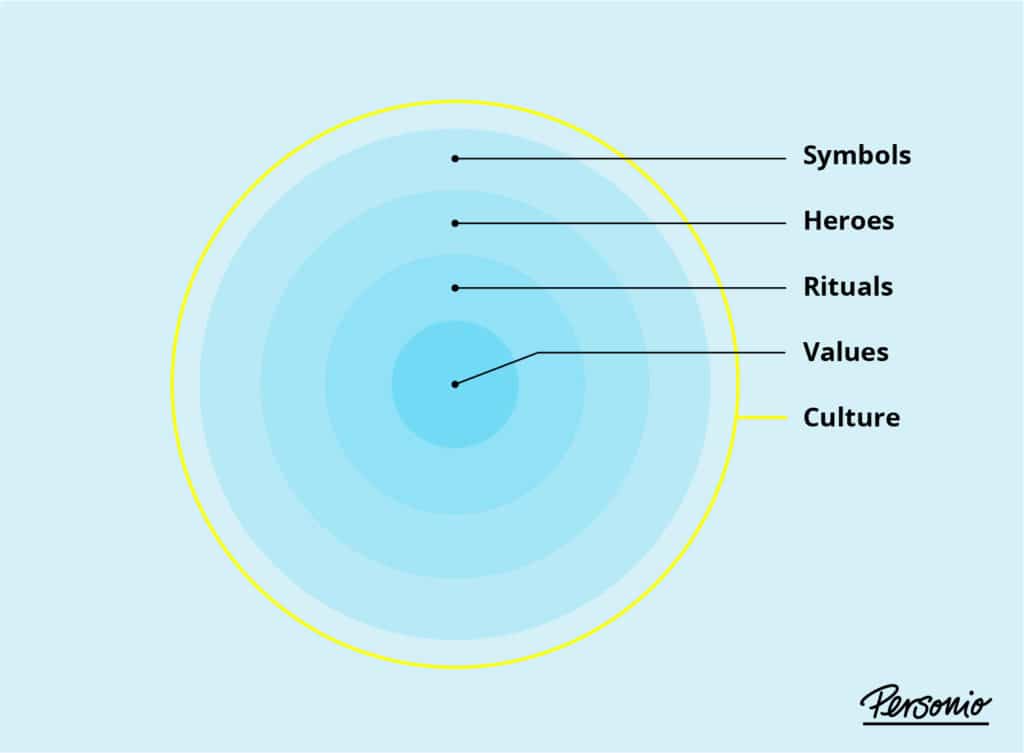Latest Blog Posts
Organisational Culture Models: Remember These Three

Which organisational cultures are the most popular? Better yet, which would be the most effective for your organisation? While organisational culture, in general, can be a bit of a tricky subject to nail down, these models can help add focus.
In this article, we profile the three most popular corporate culture models. If you're looking to level up your learning on culture, we recommend giving it a read.
We wrote the definitive guide to all things culture. Download it for free now.Contents
- 1What are organisational culture models?
- 2The top three organisational culture models
- 3Organisational culture model: The McKinsey 7S Framework
- 4Organisational culture model: Cultural Iceberg Model
- 5Organisational culture model: Hofstede’s Model
- 6Building an action plan for your culture
- 7What can your organisation do to improve culture?
- 8Time back to focus on culture
What are organisational culture models?
Organisational culture models are frameworks used to define, shape or influence the culture of a company. Think of them as ways to frame the conversation around culture, and then sketch out or further define the action steps that can help correct, optimise or change the course of your culture.
We’ll explain three of the most popular below, but let’s talk about why it matters first.
Corporate culture, and the models that go with them, are far from a static topic. In fact, your culture may be fine one day, and not the next. And, even the smallest change can have a cascading effect: maybe it’s a new hire in management, a change in the onboarding process or a new hybrid working policy.
So, it’s equal parts fluid and fragile. What an organisational culture model can do is put a framework in place to try and better define or root culture in a meaningful way. That way, it becomes less conceptual and more actionable.
And, as part of that, an HR department can play a key role. Dissatisfied with your current culture? It may have a detrimental effect on your hiring efforts, as over two-thirds of millennials cite culture as a more influential factor than even salary.
So, shaping your culture is now more important than ever.
The top three organisational culture models
One of the most popular organisational culture models is the cultural web model. We won’t be coming to that one today, but only because we have already profiled it in a previous post which you can find here.
That leads us to the topic of today’s discussion. For each of these models, we want to consider three key factors:
Defining your company’s culture
The steps to shaping it in a real way
How each model leads to real action steps
On one hand, a corporate culture model can be a key way of understanding how culture operates and can reveal how culture is currently functioning within your org.
On the other, a model may feel like an excuse to invest less time in culture and let the model do the work. Don’t get this confused: A corporate culture model is a great way to understand things, but it won’t do the hard work for you.
That’s why we’ll also talk about action steps! Let’s dive in…
Organisational culture model: The McKinsey 7S Framework
Tom Peters and Robert Waterman developed the 7S framework, which is sometimes also referred to as the McKinsey 7S Framework, in the 1970s, when they were working with McKinsey as consultants.
How does the McKinsey 7S Framework work?
In their model, Peters and Waterman focus on the company as a whole system whose ultimate success depends on seven hard and soft elements.
While hard elements can be clearly mapped, for example to charts, plans, etc., soft elements are more difficult to grasp. This is because they describe values, skills, and working styles, which are in constant flux.

Source: Tom Peters and Robert Waterman
Hard Elements | Soft Elements |
|---|---|
Strategy | Culture |
Structure | Staff |
Systems | Skills |
| Shared Values |
All of these elements are interdependent. While soft elements may be less tangible or concrete, they can have a stronger impact on the business as a whole. That’s because they form the foundation for each employee’s day-to-day work, so they can have an all-encompassing effect (for better or worse).
According to Peters and Waterman, a company will be successful if it manages to balance all of these elements.
If, however, a company only focuses on hard elements and, for example, creates a new department without considering the decision in the context of the others it will most likely destabilise rather than improve the organisation.
What can you do with this model?
The first thing to do is map out each of the elements at play. Then, think about what they mean for your organisation. Try to arrive at a unique, and honest, definition for each. Honesty is key here.
Then, think about a change in your organisation. Change management is one of the most important topics in an organisation, and one change can completely reshape culture in a positive or negative way.
Take one single change, like adding a new department (as mentioned earlier), and consider each of the outcomes in the course of each factor. Here’s an example:
Element | Effect |
|---|---|
Strategy | How would this shape future performance? |
Structure | What would this change look like on an org chart? |
Systems | Which systems or processes would this disrupt? |
Staff | Who would move where or in what regard? |
Skills | What skills would need to be added, removed, or shifted? |
Shared Values | What idea backs this change up and what's the logic? |
The final factor is the most important one: corporate culture. After taking in all of these considerations, think about how this change might change the way people feel about their work. Will it be positive or negative?
The McKinsey 7S framework, as a corporate culture model, is great as a weighting device. It can help map out all of the important factors when making a change of any kind, so that your team can see them at a glance.
A decade of insights on corporate culture

Download one of our latest People Manuals on the subject of corporate culture and become a subject matter expert today.
Download it todayOrganisational culture model: Cultural Iceberg Model
Edward T. Hall visualised corporate culture in the shape of an iceberg. In that view, he understood culture as a pattern of fundamental assumptions used to solve internal and external problems.
How does the Cultural Iceberg Model work?
The cultural iceberg model includes both visible and invisible aspects, which results in outsiders not always being able to understand it to its fullest extent.
The tip of the iceberg, i.e. its visible portion, stands for the observable aspects of an organisation’s culture. Beneath it, there are hidden structures of workplace culture. These make up the larger and therefore more important part.
These underlying structures determine which elements ultimately reach the surface. Here’s an image to help:

Source: Edward T. Hall
What can you do with this model?
In the cultural iceberg model, an organisation can only shape its culture by addressing its invisible aspects. If your team wants a behavioural or cultural change, it needs to recognise the hidden aspects at work:
What are the employees’ needs?
How does the company manage?
How do people cooperate?
It is at this deeper level where change can be initiated that ultimately rises to the top. In that sense, it is about diving deeper into your culture, rather than your set-out corporate values or principles.
Instead, you need to conduct employee pulse surveys, or look for ways to understand employee engagement in deeper ways. The cultural iceberg model is a way to start and a way to dig deeper into your culture.
Organisational culture model: Hofstede’s Model
Hofstede conceived of culture as a kind of ‘software of the mind.’ This entailed shared mental programming that provides differentiation. Different people with different identities, experiences, and values come together and ‘develop culture.’
How does Hofstede’s Model work?
Hofstede chose the image of an onion to distinguish between four layers of cultural manifestation:

Source: Hofstede
Cultures share an environment and therefore undergo a similar socialisation process. This not only provides guidance and stabilises the system, but also differentiates one group from the next.
What can you do with this model?
Hofstede’s model is a great device for conceptualising your ideal corporate culture. While you may not be able to derive many action steps from it, you can begin to understand how it is shaped and which factors are at play.
For this reason, this model is best suited to a company only starting out on its journey of outlining corporate culture. This can serve as a great guide to starting to put some kind of cultural manifesto into place.
Building an action plan for your culture
When it comes down to it, you need to put together an action plan that can help build a strong organisational culture for your organisation. How do you do it?
Step | Action |
|---|---|
Set Your Goals | The first thing is to do a ‘hard reset’ of your culture. Think about where it is now (even employing the cultural web model to help), and where you want to take it. Envision the ideal culture, what it stands for, and how it will help increase performance. |
Define Clear & Unique Values | Values are an intrinsic part of a positive corporate culture. When you have them and address them regularly, employees have a clear connection between their work and what the company values or how the company addresses problems. |
Live Those Values | It’s not enough to simply talk about your values, you need to live them and communicate them! You can read our full guide to communicating corporate values, but the main thing you need to know is that values need to be shown (and not just talked about). |
Measure Values | In the same vein as living your values, you also need to find a way to measure them. While it can be done with data, it helps to think about ways that you can get feedback or get employees to identify values in their own work. Rather than having to spell it out for them, this can lead to proactive identification while developing stronger connections. |
HR Best Practice: Avoid values that are overly generic, and go for something that is unique to your company and your mission. Make it specific, because it will help develop real, actionable ways to ‘live your values.’
What can your organisation do to improve culture?
Let’s start with a quick brainstorm! Here are some corporate culture initiatives to kick things off:
Developing your own purpose or identity that employees can understand and express.
Helping employees learn their company’s strategic goals.
Allowing employees to flourish by using their full potential to support strategic goals.
Offering professional development plans to help employees meet new challenges.
Valuing the ability to innovate and to have a positive approach to mistakes.
Ensuring that communication within the company is transparent.
Relying on cooperation within management, rather than competition.
Engaging all stakeholders, from investors through to customers, the media, and the public.
By ensuring that the overall conduct is in line with your company’s vision.
Time back to focus on culture
At Personio, we have a lot of experience helping companies with their culture. We have helped over 10,000+ companies, across Europe, automate their people processes and gain time back for what matters on topics like culture.
Our all-in-one HR software solution can help recruit, onboard, manage, develop and pay your employees, so your teams can focus on more important matters. Think of all the time you could take back to focus on your values, collaboration efforts and more.
We'd love for you to find out more. Learn a bit more about the advantages of working with Personio, or speak with a helpful HR expert today.

